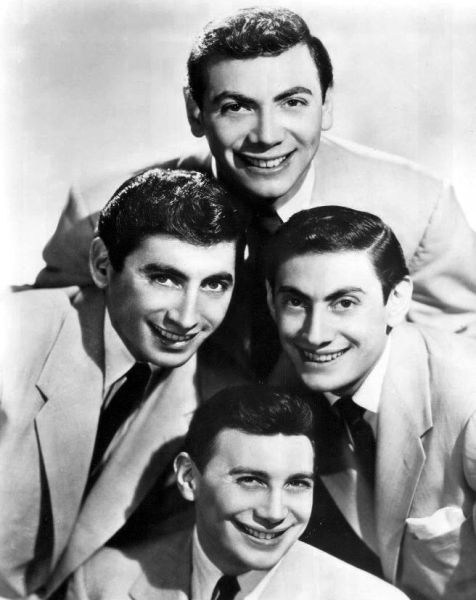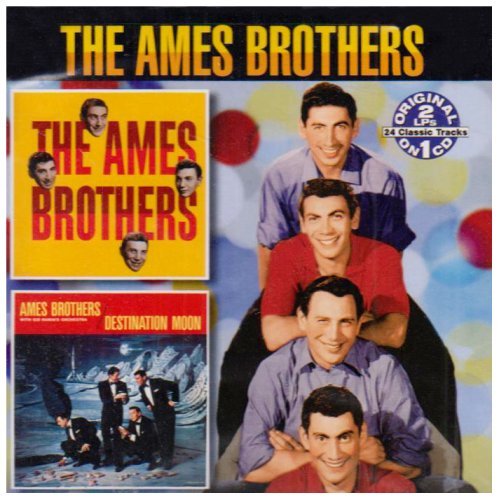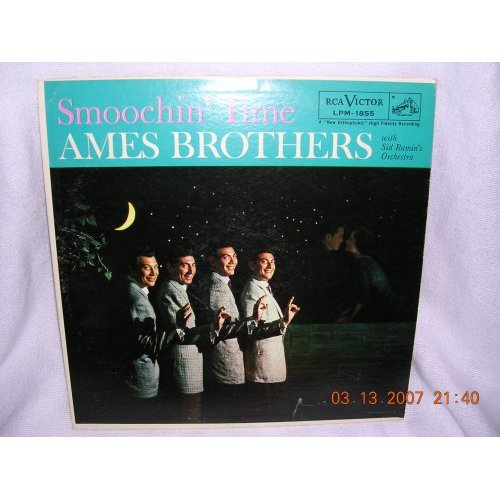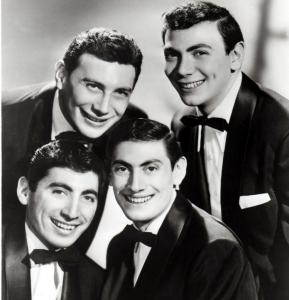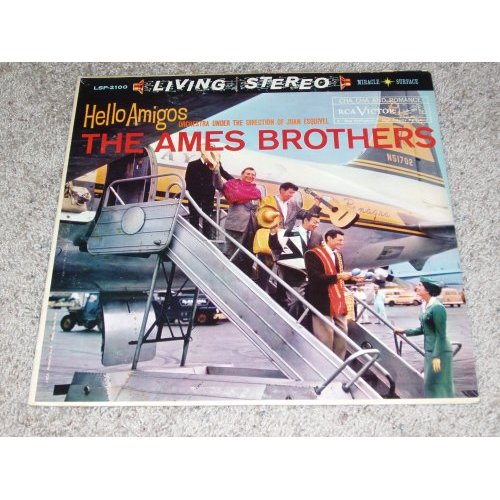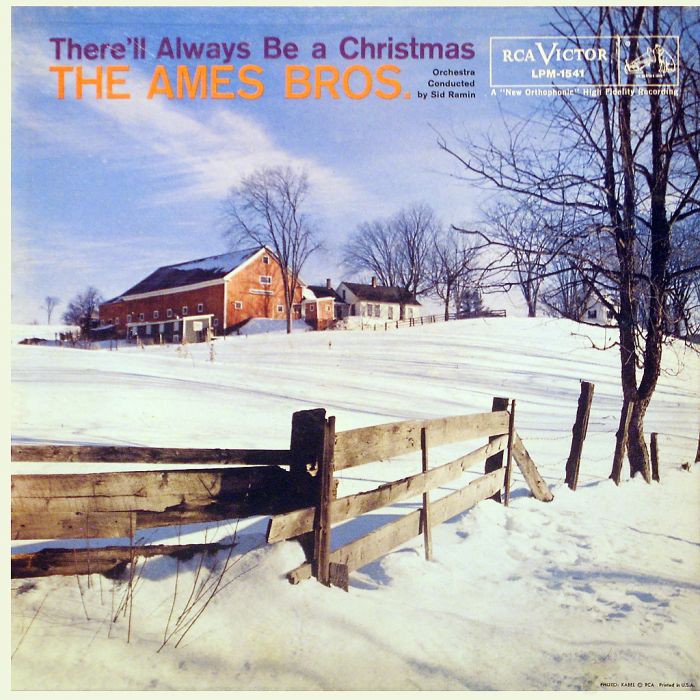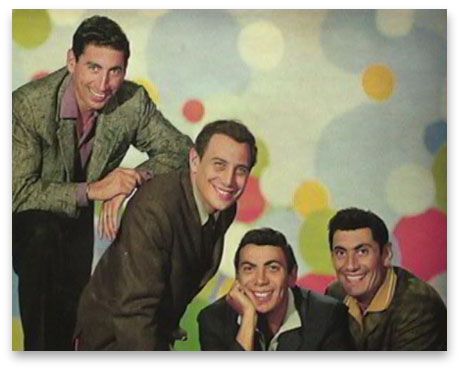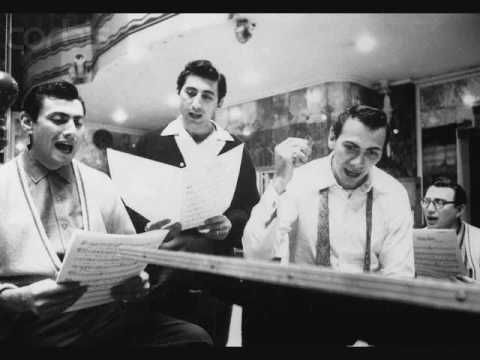The Ames Brothers
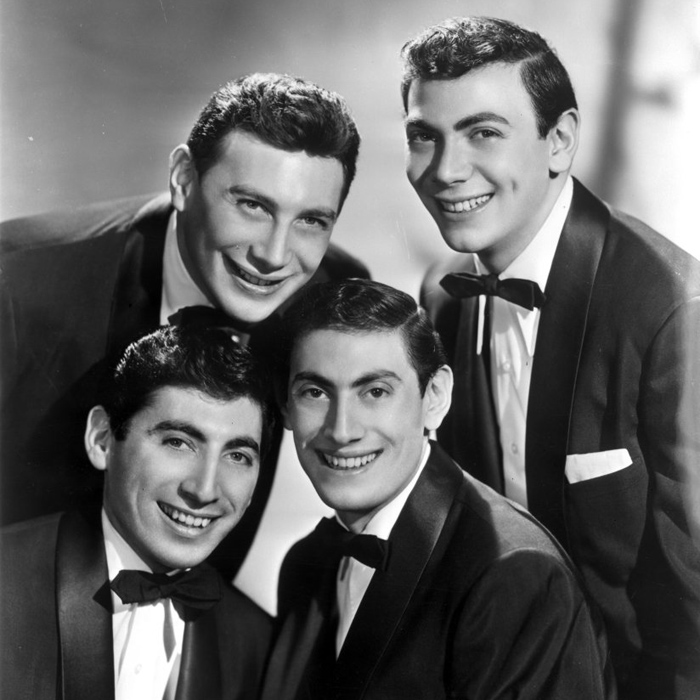
In the ‘60s and ‘70s, family singing groups like The Beach Boys, The Ronettes, The Jackson 5, The Bee Gees, The Osmonds and The Carpenters dominated the charts and ruled the airwaves. But The Ames Brothers did it first, more than a decade before any of those bands even formed, let alone had a hit single.
A pre-rock ‘n’ roll, pre-stereo-recording tour de force whose carefully crafted, clean-cut traditional pop landed them on the charts 49 times – three of those at #1 – the close-harmony quartet was practically unrivaled in popularity in television’s earliest days. They were among the first groups to appear on Toast of the Town (before it was renamed The Ed Sullivan Show) and the very first to host a weekly program, The Ames Brothers Show on CBS, which was the first TV show to be syndicated outside the United States. Above all, The Ames Brothers were an extraordinary example of the conspicuous creative chemistry only siblings can achieve.
FORMATION, EARLY PERFORMANCES, MOVE TO NYC
The group was formed in 1944 in Malden, Massachusetts, by the four oldest of the Urick family’s nine children: Joe (b. 1921, bass), Gene (b. 1924, second tenor), Vic (b. 1925, first tenor) and Ed (b. 1927, lead). First-generation Americans, the boys’ parents emigrated to the US from modern-day Ukraine and surrounded their children with classical and operatic music from birth while reading them Shakespeare and other classics years before they had reached school age.
Initially called The Amory Brothers (after Vic’s middle name), the quartet won a few local talent contests before moving to Boston and getting rave reviews for shows at venues including Franklin Field, a semi-pro baseball park. During a months-long engagement at The Fox and Hounds, one of the city’s premier nightclubs, word of their audience-thrilling performances spread to New York and famed bandleader Art Mooney invited them to join his orchestra there, where the budding stars played at clubs and hotels and in live radio appearances through 1947.
FIRST RECORDINGS, HITS, BECOMING “THE AMES BROTHERS”
In 1948, the brothers got their big break in recording when they were at Leeds Publishing Company searching for a song called “Should I” that their mother had asked them to sing and producer Milt Gabler of Decca Records overheard them practicing it. He asked them to cut a few sides for the label, which they did, but the tracks were never released because of a recording ban imposed that year by the American Federation of Musicians, a labor union.
In 1949, when the ban was lifted and the Uricks changed the group’s name to The Ames Brothers, they became the first artists to record for Decca sublabel Coral Records. After three tracks hit #21, #23 and #29 on the national charts, Coral issued “Rag Mop” and “Sentimental Me” on a single disc and both went to #1 in January 1950, catapulting the group to national fame.
TV APPEARANCES, OTHER CHARTING SINGLES
The success led to an appearance on Toast of the Town that year and in 1959 they made their final television appearance on the same program (after it had been renamed The Ed Sullivan Show in 1955). The group continued to be a tightly harmonized hit-making machine through most of the ‘50s, making frequent appearances on the television variety show Arthur Godfrey and His Friends and one on The Pat Boone Chevy Showroom. In 1951, their rendition of “Undecided” shot to #2 and three others peaked at #16, #21 and #23.
In 1952, they recorded four top-20 hits and in 1953, when they left Decca for RCA Victor, they hit #1 again with “You You You,” the best-selling song of their career; they recorded four others over the next year that reached #21, #22, #23 and #29. In 1954, their recordings of “The Naughty Lady of Shady Land” and “The Man with the Banjo” reached #3 and #6 respectively, and in 1955 – when CBS aired The Ames Brothers Show on Friday nights – their version of “My Bonnie Lassie” hit #11. In 1956, “It Only Hurts for a Little While” hit #11, and in 1957 both “Tammy” and “Melodie d’Amour” reached #5
DECREASING POPULARITY, DISBANDING, ED’S SOLO CAREER
By 1958, despite winning Billboard magazine’s Best Vocal Group award and their recording of “Pussy Cat” reaching #17, the group’s chart-busting days were over as the rock era blossomed and the market for traditional-pop vocal groups wilted. The band split in 1959 and RCA Victor issued 13 previously unreleases singles over the next four years, with only one of them cracking the top 40 (1960’s “China Doll” at #38).
After the group disbanded, youngest brother Ed enjoyed a successful career in stage, television and music. He appeared on Broadway several times, played Mingo in the TV series Daniel Boone from 1964 to 1970, and recorded over a dozen solo albums that notched three #1 hits in the Billboard Adult Contemporary chart in 1967/8 – “My Cup Runneth Over,” “Time Time” and “When the Snow Is on the Roses” – in addition to 14 others that reached the top 30.
VOCAL GROUP HALL OF FAME INDUCTION, DEATHS
In 1998, The Ames Brothers were inducted into the Vocal Group Hall of Fame. Vic passed away in 1978 at age 52, followed by Gene in 1997 at age 73, Joe in 2007 at age 86 and Ed in 2023 at age 95.
(by D.S. Monahan)

